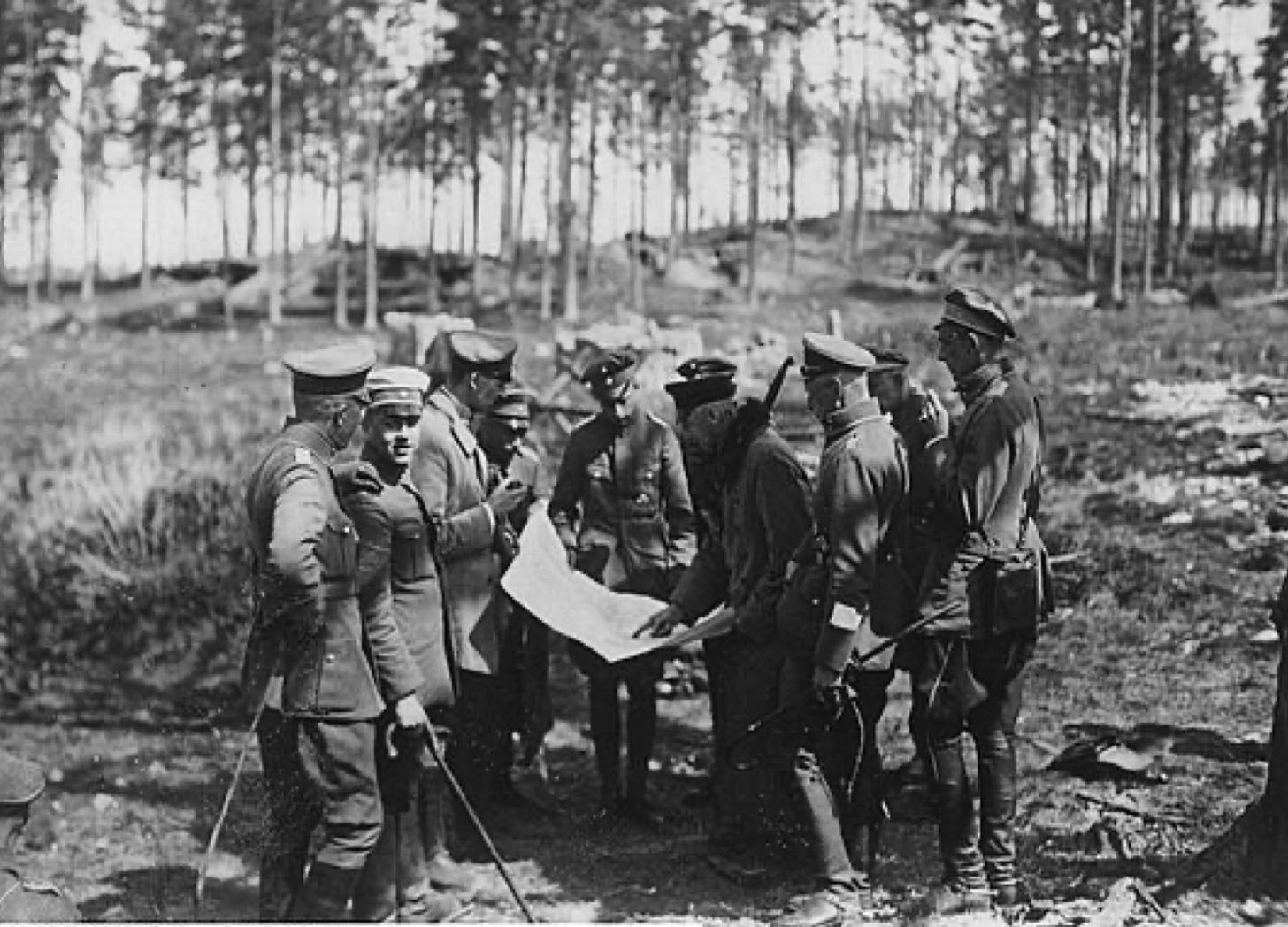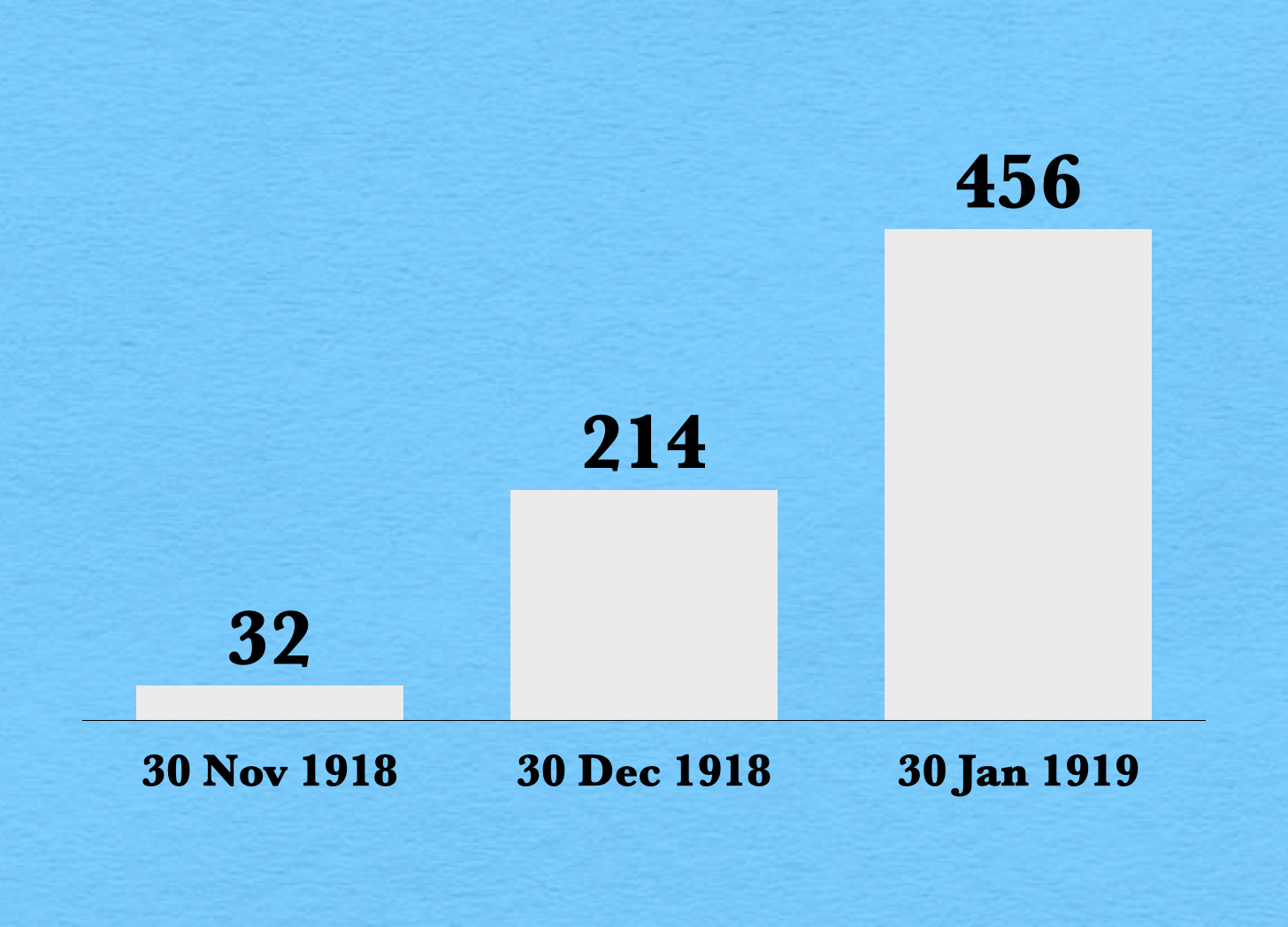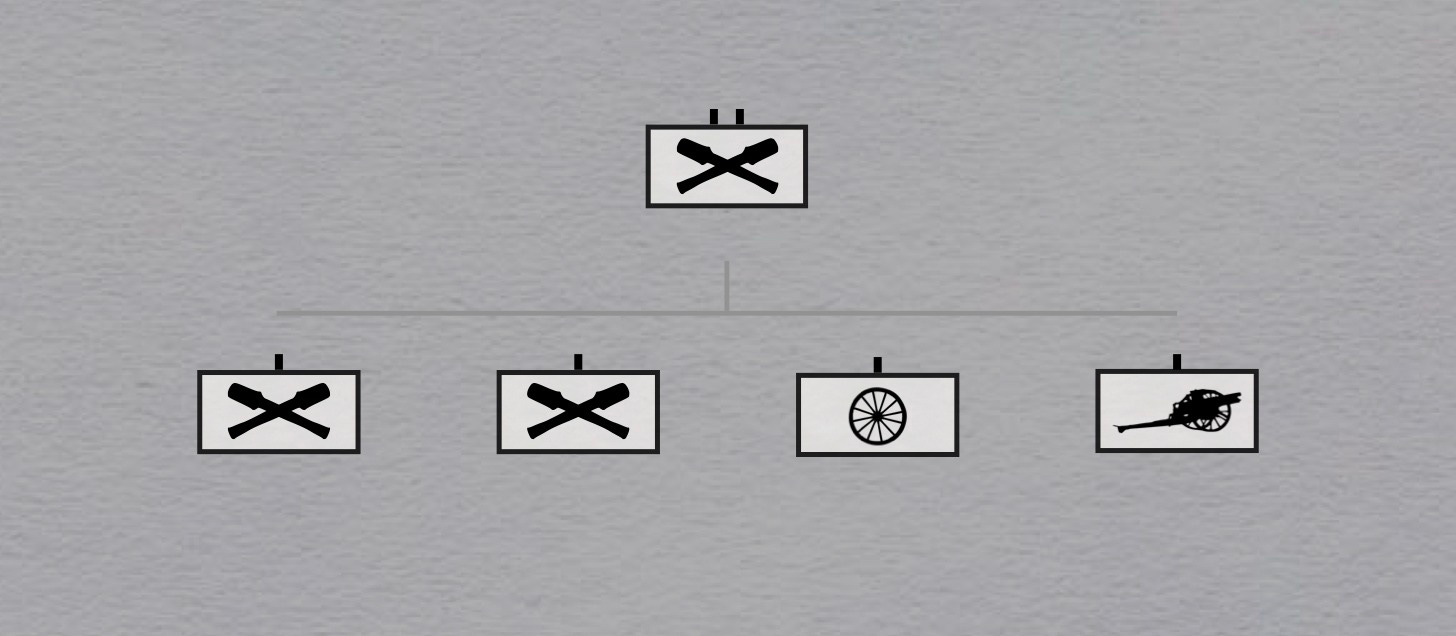The Stosstrupp Abteilung
Baltic Landeswehr

In the course of the seventeenth century, the German language managed to acquire two cognates of the English word troop. From the Dutch de troep, it got der Trupp, which can describe a team, squad, section, or platoon. From the French la troupe, it obtained die Truppe, which usually refers to a larger unit.
Thanks to the presence of these two words, soldiers of the Baltic Landeswehr enjoyed a great deal of flexibility when it came to providing names for a unit of that formation that, over the course of the two months of its existence, expanded fourteenfold.
The first papers produced by this unit, the oldest of which bears the date of 2 December 1918, described it simply as ‘the Detachment’ (die Abteilung). Three days later, however, the term Stosstrupp Abteilung made its documentary debut. Two weeks afterwards, the adjutant of the unit acquired a stamp that combined its skull-and-crossbones emblem with the words Landeswehr Stosstrupp Abteilung z.B.V. Riga (Territorial Defense Assault Troop Detachment for Special Purposes, Riga).
These designations competed with der Stosstrupp, die Stosstruppe, and Abteilung Bohm. (Lieutenant Bohm, who had earned a reserve commission in one of the armies of the German Empire, served as the first commanding officer of the Stosstrupp Abteilung. On Christmas Day, 1918, he was promoted to the rank of Rittmeister.)1
As the Stosstrupp Abteilung grew, squads (Gruppen) were assembled into platoons (Züge) and the platoons paired off to become ‘double platoons’ (Doppelzüge). Shortly before the end of 1918, moreover, each of the double platoons acquired the title of Schwadron, as did the transport element (Tross Schwadron) of the unit.2 (In the course of this change of nomenclature, each of the Schwadronen acquired a third platoon.)
The field artillery element of the Stosstrupp Abteilung also broke down into a pair of platoons - a two-gun Escort Platoon (Begleit Zug) and a two piece Howitzer Platoon (Haubitzen Zug). However, rather than being styled a Schwadron, it became known either as the Stosstrupp Begleit Batterie (Escort Battery) or (for most practical purposes) die Batterie.
Sources
Abteilungsbefehle Nr.1 - 109, Nr.1 - 115 der Stoßtruppe der Baltischen Landeswehr (Orders-1-115 of the Assault Unit of the Baltic Territorial Force) (Bundesarchiv R 8025/6)
Stosstruppe 1a Gründungszeit in Riga Dezember 1918 (Assault Unit 1a: Establishment in Riga December 1918) (Bundesarchiv R 8025/17)
For More about the Baltic Landeswehr
The armies of the German Empire employed two ranks that are normally translated as ‘captain’. If the officer in question served in the cavalry, he bore the title of Rittmeister. If, however, he served in any other arm, he was known as a Hauptmann.
Until the early 1880s, Schwadron had served as the normal designation for the major subdivision of a cavalry regiment of the German Empire. However, by the time of the First World War, it had been entirely eclipsed by Eskadron.







